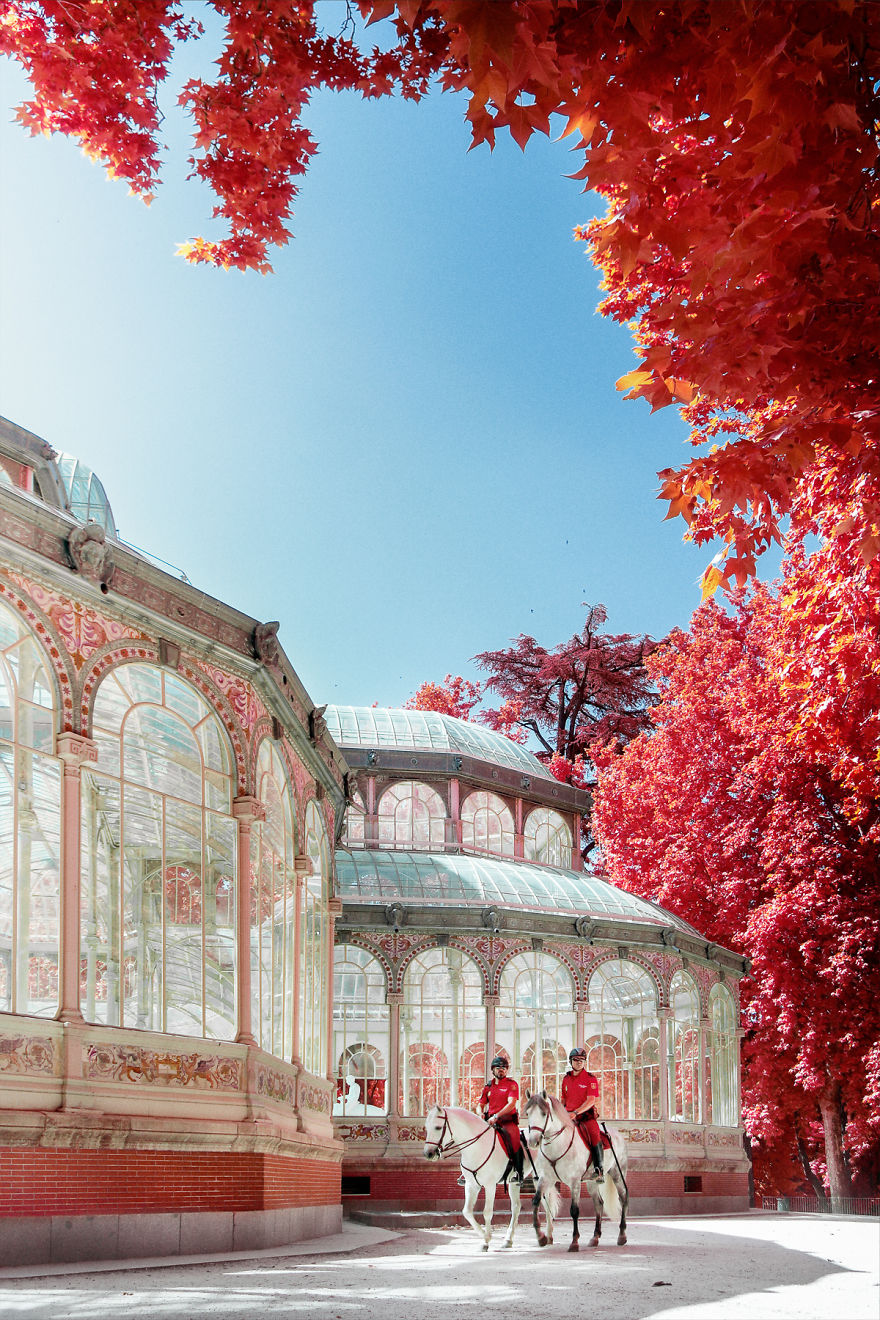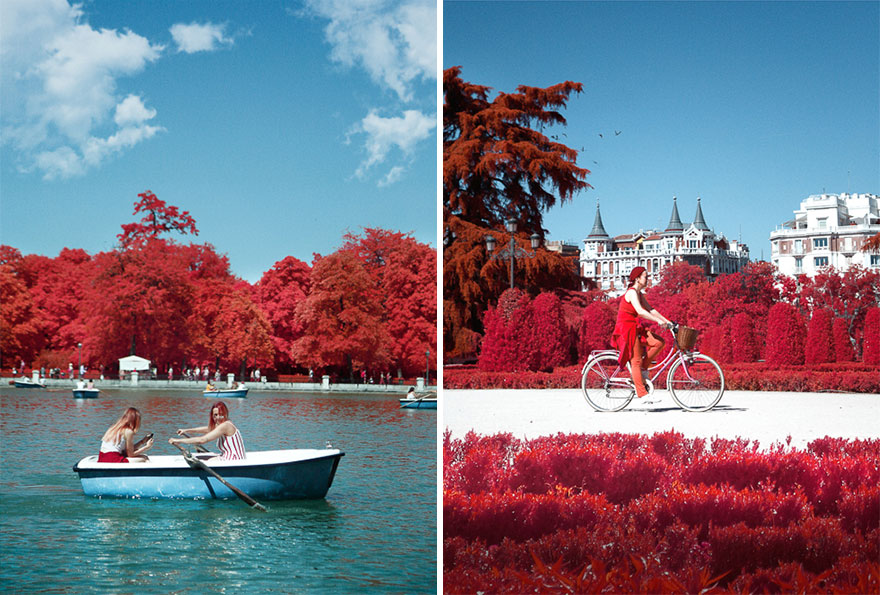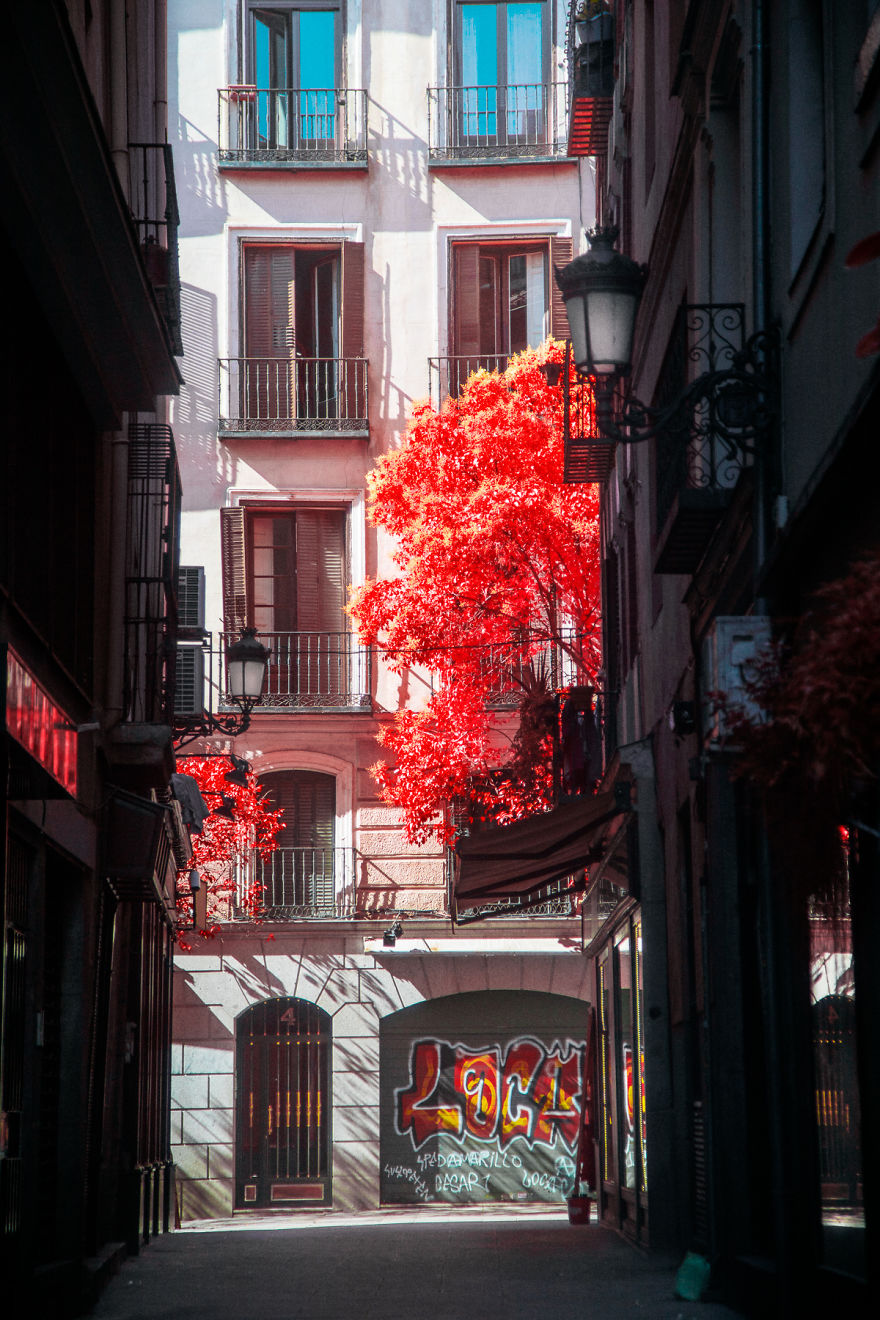Being in Madrid for several days for a retouching masterclass, I wandered the city and tried to capture its atmosphere while following the places where vegetation led me.
As digital filters are a real trend on social media, I like to explore a more crafty way of using them, going old-school with real cuts of glass. With KolariVision, I created the IRChrome filter - a true glass filter that one can screw on a camera lens - that allows, once combined with an infrared-converted camera, to take pictures in the look and feel of the old Kodak Aerochrome film without huge post-processing.
Check out the pictures I took in Norway here!
More info: behance.net | yannphilippe.com | Instagram | Facebook
This post may include affiliate links.
I’m a 37-year-old French photographer. I studied cinema, digital art and multimedia for four years and then entered the French world-renowned photography school of les Gobelins. This is where I completed my training specializing in photography and image processing.
I graduated successfully in June 2009. Right after leaving the school, I co-founded the digital post-production agency Pixus Prod in Paris. Four years later, I opened a rental photography studio and in 2016 I opened another production and post-production company: FLOWIM Studio.
Fantasy and imaginary worlds are the first engines of my personal creations. I aim to question the limits of human perception in my works. I love photography more when it is done in a pictorialist way than when it accurately translates reality in a documentary style. When photography becomes the mirror of surrealism or imagination, that’s my favorite part.
As the Impressionists did, I like to use my camera more to express an elusive feeling than a crude reality. When I see the scenery or a place, I use photography to describe the mood.
This is why I am interested a lot in alternative techniques: old photographic processes like cyanotype, Kirlian photography, etc. In 2008, I discovered infrared and immediately knew I had to try this. It was during my final year of scholarship so I ordered my first camera, a Fujifilm Finepix IS1 IR full spectrum bridge. I shot only in 720nm after having done a lot of unconverted infrared photography with a Nikon Coolpix 8800.
Being more and more demanding about quality, my IS-1 was soon not high-end enough to produce images matching my needs. Between 2010 and 2014 I shot a lot fewer infrared pictures because of that. In 2014, I found out that IR conversion went more mainstream and I acquired a Canon 70D Full Spectrum.
I am interested in the emulation of Aerochrome film. I resumed my research studies where I left them in 2008, a time when I experimented a lot with colored gels (cyan ones were my base to dig deeper into the Aerochrome reproduction quest). I did a lot of glass/acrylic filter purchases to test complex combinations involving 3 or 4 glass layers and calculated the resulting transmission curves. I refined my combination numerous times before reaching out to Kolari Vision to measure the final transmission curve I found and put it into the least amount of glass layers possible. This is how we finally created the IRChrome filter.
..captured the old and the new so beautifully! the flag is an even better touch!
Madrid is a very green city with huge park areas and streets bordered by trees. For the first time, I tried to do some street photography, but not candid ones: I wanted my framings to be as sophisticated and thoughtful as possible. The various layers of depth one can see are something I really watch for. Playing with geometry, symmetry, dynamic lines, vanishing points, and sky contrast matters a lot to me when I frame my pictures. Tiny unnoticeable details are also important. It’s really a city where vegetation and trees are very present (much more than in Paris, for example), and as the city is very luminous (a lot of buildings are white), that makes the infrared stand out even more!
Infrared photography is a difficult art, because the effect easily overpowers your subject, making it difficult to stand out. Shooting one single picture is “easy”, but creating a whole meaningful series is much more complicated and demands a lot of thinking and effort. Using infrared over “normal visible photography” should always be purposeful and not just add an effect on the way you use Instagram/TikTok filters. Retouching a picture usually takes nearly 30 minutes. For a series like the Madrid one, I did it in 3 days (including the time of editing, choosing and ordering the pictures).
Right now I’m working on an infrared photographic series about the Loire river in France. I’m shooting the shores and using A.I.-generated imaging as well.
Hey there ;) this is a very cool shot, did you use a tilt shift? or panoramic shots? was it in camera? Feels like anamorphic!
The photos are really beautiful, there is a surrealistic tranquillity.
I'm trying to understand how the light works. So, plants reflect infrared, while concrete, glass, and metal absorb it? Colored clothes give off infrared, but white clothes don't? Why doesn't the sky have infrared? Infrared is basically heat, right? Why are wooden objects black? I'm confused. Can someone explain?
The photos are really beautiful, there is a surrealistic tranquillity.
I'm trying to understand how the light works. So, plants reflect infrared, while concrete, glass, and metal absorb it? Colored clothes give off infrared, but white clothes don't? Why doesn't the sky have infrared? Infrared is basically heat, right? Why are wooden objects black? I'm confused. Can someone explain?

 Dark Mode
Dark Mode 

 No fees, cancel anytime
No fees, cancel anytime 







































































